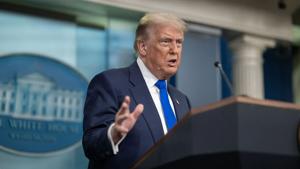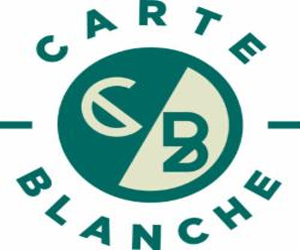President Donald Trump asked the U.S. Supreme Court late Wednesday to rescue his trade deals and economic agenda after two lower courts said the president has no authority to issue broad tariffs.
Trump’s team told the high court that the nation’s future depends on a quick ruling.
“The stakes in this case could not be higher,” they wrote in a late-night court filing. “The President and his Cabinet officials have determined that the tariffs are promoting peace and unprecedented economic prosperity, and that the denial of tariff authority would expose our nation to trade retaliation without effective defenses and thrust America back to the brink of economic catastrophe.”
Two courts have already said the 1977 International Emergency Economic Powers Act doesn’t give the president unbounded tariff authority. The 1977 law doesn’t mention tariffs.
Jeffrey Schwab, senior counsel and director of litigation at the Texas-based Liberty Justice Center, said businesses are struggling to survive while facing the highest tariffs in nearly a century. Schwab and the Liberty Justice Center filed suit in April representing five small U.S.-based businesses. A group of Democrat-led states also filed suit.
“The government has now asked the U.S. Supreme Court to review this case,” Schwab said. “Both federal courts that considered the issue agreed that IEEPA does not give the president unchecked tariff authority. We are confident that our legal arguments against the so‑called ‘Liberation Day’ tariffs will ultimately prevail. These unlawful tariffs are inflicting serious harm on small businesses and jeopardizing their survival. We hope for a prompt resolution of this case for our clients.”
Last Friday, the U.S. Court of Appeals for the Federal Circuit affirmed a previous lower court ruling, but said Trump’s tariffs could remain in place while the administration appeals to the U.S. Supreme Court. In the 7-4 decision, the majority said that tariff authority rests with Congress.
“That decision casts a pall of uncertainty upon ongoing foreign negotiations that the President has been pursuing through tariffs over the past five months, jeopardizing both already-negotiated framework deals and ongoing negotiations,” Solicitor General D. John Sauer wrote in the administration’s Supreme Court petition. “Few cases have so clearly called out for this Court’s swift resolution.”
In May, the U.S. Court of International Trade unanimously ruled that Congress did not give the president tariff authority under the International Emergency Economic Powers Act of 1977. The ruling voided Trump’s “Liberation Day” tariffs and struck down other tariffs Trump issued under the IEEPA. The administration appealed to the Federal Circuit, which ruled that Trump’s “Liberation Day” tariffs could remain in place while the legal challenge continued.
New tariffs raised $58.5 billion in revenue between January and June of this year before accounting for income and payroll tax offsets, according to an analysis of federal data from the Penn Wharton Budget Model. The study found that the average effective tariff rate increased to 9.14% in June from 2.2% in January, when Trump returned to office.
Trump has said he wants to use tariffs to restore manufacturing jobs lost to lower-wage countries in decades past, shift the tax burden away from U.S. families and pay down the national debt.
A tariff is a tax on imported goods paid by the person or company that imports the goods. The importer can absorb the cost of the tariffs or try to pass the cost on to consumers through higher prices.
Economists, businesses and some public companies have warned that tariffs could raise prices on a wide range of consumer products.






